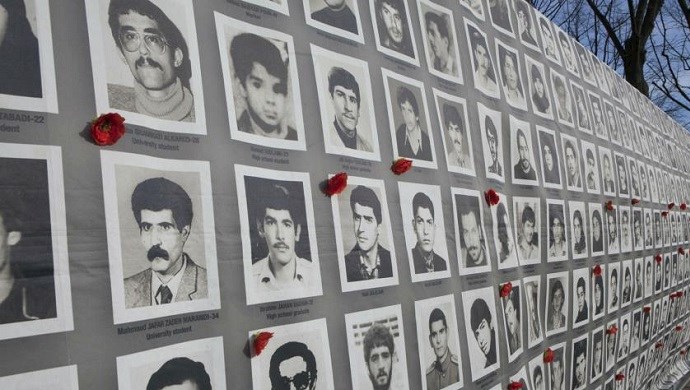Reporting by PMOI/MEK
Iran, September 14, 2021—33 years ago, in the summer of 1988 the regime ruling Iran launched a massive killing spree in prisons across the country. Political prisoners from a variety of backgrounds were the target of a horrific campaign resulting in the executions of more than 30,000 political prisoners, mostly members and supporters of the Iranian opposition People's Mojahedin Organization of Iran (PMOI/MEK).
Mr. Asghar Mehdizadeh is one of the few who survived the 1988 massacre, for which the regime had established the notorious “Death Commissions” consisting of a handful of officials to determine the fate of each prisoner kangaroo trials lasting mere minutes. Only a few questions were asked, the main of which demanding from the prisoner to clarify their current association to the PMOI/MEK. Based on a fatwa issued by the regime’s then–Supreme Leader Ruhollah Khomeini, all inmates steadfast to their loyalty and/or support to the MEK in any way would have to be executed immediately.
Through the past three decades the small number of survivors of Iran’s 1988 massacre have detailed their accounts in various articles, interviews and books. According to his eyewitness reports, Mr. Mehdizadeh is the only individual to have actually seen the room described “Death Hall” in Gohardasht prison of Karaj (west of Tehran) and survived. Inmates were executed in groups of 12 in the “Death Hall,” making Gohardasht, alongside the capital’s Evin Prison, one of the facilities where the regime executed several hundred if not thousands of political prisoners during the 1988 massacre.
Mr. Mehdizadeh describes the “Death Hall” as a large room with a stage and 12 ropes (nooses) hanging from the ceiling.
“Next to my solitary cell, I saw the lights of few other cells were on. I called the first one through the window. He introduced himself. He was Hadi Mohammadnejad. I also told him my name. He said: “Asghar, they took me to the death hall. They raise the subject of interviews and intelligence cooperation; anyone who refuses would be executed the next day.”
In the Death Hall twelve inmates would be placed upon chairs on the stage and executed simultaneously by members of the regime’s Revolutionary Guards (IRGC).
The next morning, two guards came for me and told me to get dressed. When I approached the death hall, I saw that there was a crowd of prisoners. At one point, I asked a prisoner what was going on. He said, “Is it the first time you have come here?” I said yes. He replied, “Wait, they will first take you to show you the scene of the executions.”
“… the guard who had brought me called me and took me into the death hall. I took a look from underneath my blindfold and saw many corpses in front of a stage in the hall. I was kept some distance away from the stage. I eventually uncovered my blindfold and fainted from what I saw.”
These accounts shed light on the sheer number of executions carried out by the regime in just one prison, and the rate that authorities deemed necessary to execute 12 prisoners simultaneously to render their own version of the “final solution” aiming to literally eradicate the PMOI/MEK.
Mr. Mehdizadeh recalls his thoughts after regaining his consciousness, describing the regime’s atrocities in further detail.
“I said to myself, God, what is going on here? I saw 12 MEK supporters standing on a chair each with a rope around their necks. I witnessed that next to them were other bodies of the martyrs whose feet were grabbed by the guards and dragged out of the hall.”
Iran’s 1988 massacre of over 30,000 political prisoners in Iran has been described as the worst crime against humanity since World War II.
A former Iranian Intelligence Ministry deputy recorded a video clip in 2008, in which he revealed that the mullahs’ regime had massacred some 33,700 political prisoners and buried them in mass graves. According to Reza Malek, there are between 170 to 190 mass graves across the country.
More recently, Geoffrey Robertson, QC, who has thoroughly investigated the 1988 massacre, underscored that this mass killing amounts to “genocide.”
“It has been a crime to kill prisoners for centuries. The difference is that if it amounts to a particular crime of genocide, there is an international convention that binds countries to take action and punish that genocide,” he said in an online conference held in late August.
“It seems to me that there is very strong evidence that this was a genocide. It applies to killing or torturing a certain group for their religious beliefs. A religious group that did not accept the backward ideology of the Iranian regime,” Robertson added referring to Khomeini’s fatwa as the basis of the massacre.
“There is no doubt that there is a case for prosecuting [regime President Ebrahim] Raisi and others. There has been a crime committed that engages international responsibility. Something must be done about it as has been done against the perpetrators of the Srebrenica massacre,” he reiterated.





